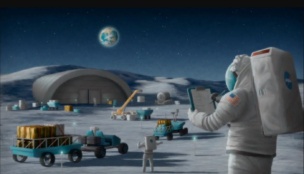54 years have passed since Armstrong took that iconic step on the Moon, marking an apex in the Apollo program and lunar exploration more broadly. Starting in 1977, however, a 36-year quiet period ensued, with zero lunar landing attempts until 2013, and only six since then.
In a sign that the lunar lull is coming to an end, three uncrewed lunar landers—from three different countries—will head to the Moon this August.
India’s Chandrayaan-3: ISRO launched its Chandrayaan-3 mission to the Moon on July 14. The spacecraft consists of a propulsion module, a lander module, and a small rover. ISRO will attempt a south pole lunar landing on August 23 or 24.
- This will be the nation’s second lunar landing attempt after its Chandrayaan-2 spacecraft crash-landed on the lunar surface four years ago.
Russia’s Luna-25: Russia will launch its Luna-25 lander mission on August 11, 45+ years after Moscow’s last mission to the Moon. The 800-kg spacecraft will head to the Buguslavsky crater at the lunar south pole to study the lunar regolith, examine the polar exosphere, and search for signs of water ice.
Japan’s SLIM Sniper: JAXA will launch its SLIM Moon Sniper lander aboard an H-2A rocket on August 26. Japan may be last to fly to the Moon next month, but the Sniper nickname undoubtedly takes first place…maybe ever. The name comes from how the spacecraft uses unique onboard cameras to identify craters, measure positioning, and pinpoint a landing. The mission’s primary goal is to demonstrate its precision navigation and shock-absorbing landing legs.
The US comes marching in: The US won’t be part of the August Moon rush, but it does have two CLPS lunar missions scheduled later this year.
- Q3 IM-1. SpaceX will launch Intuitive Machine’s Nova-C lander aboard a Falcon 9.
- Q4 Peregrine. ULA’s Vulcan rocket will send an Astrobotic lander to the Moon on its maiden launch.




